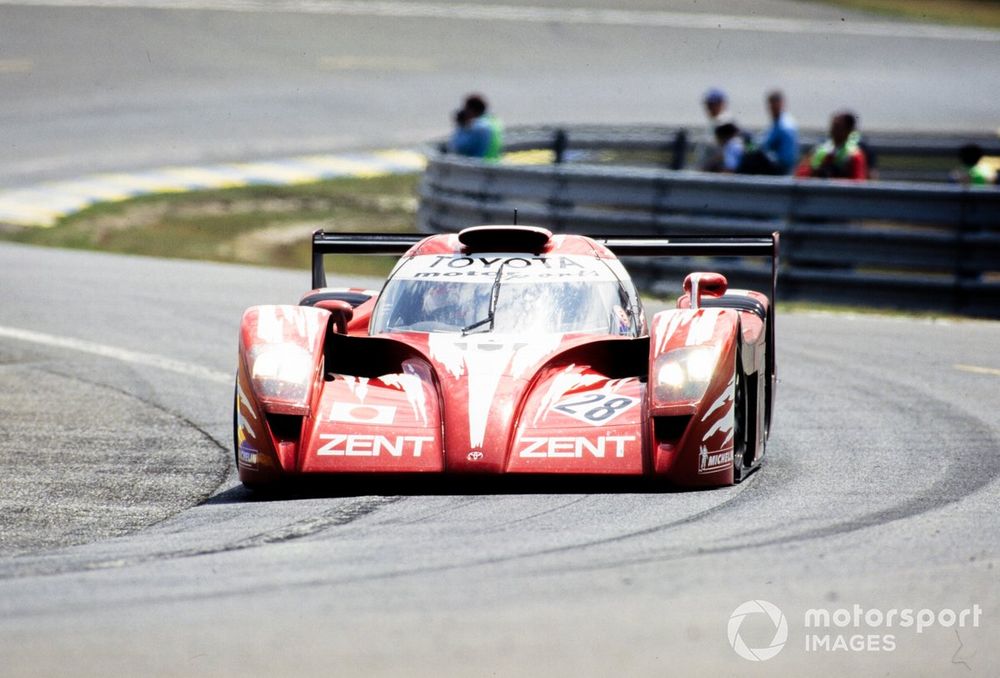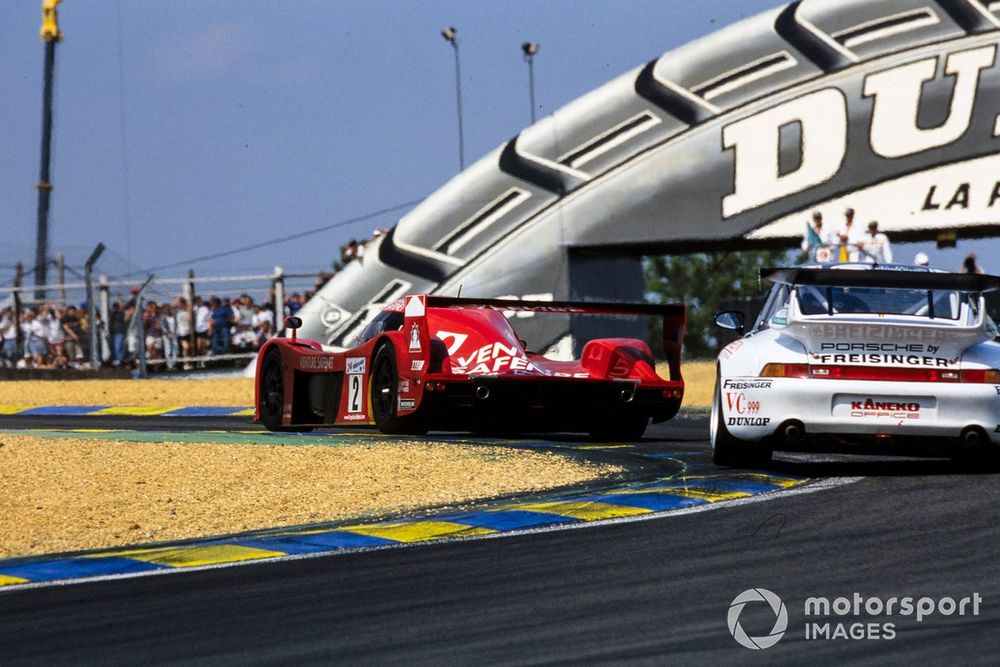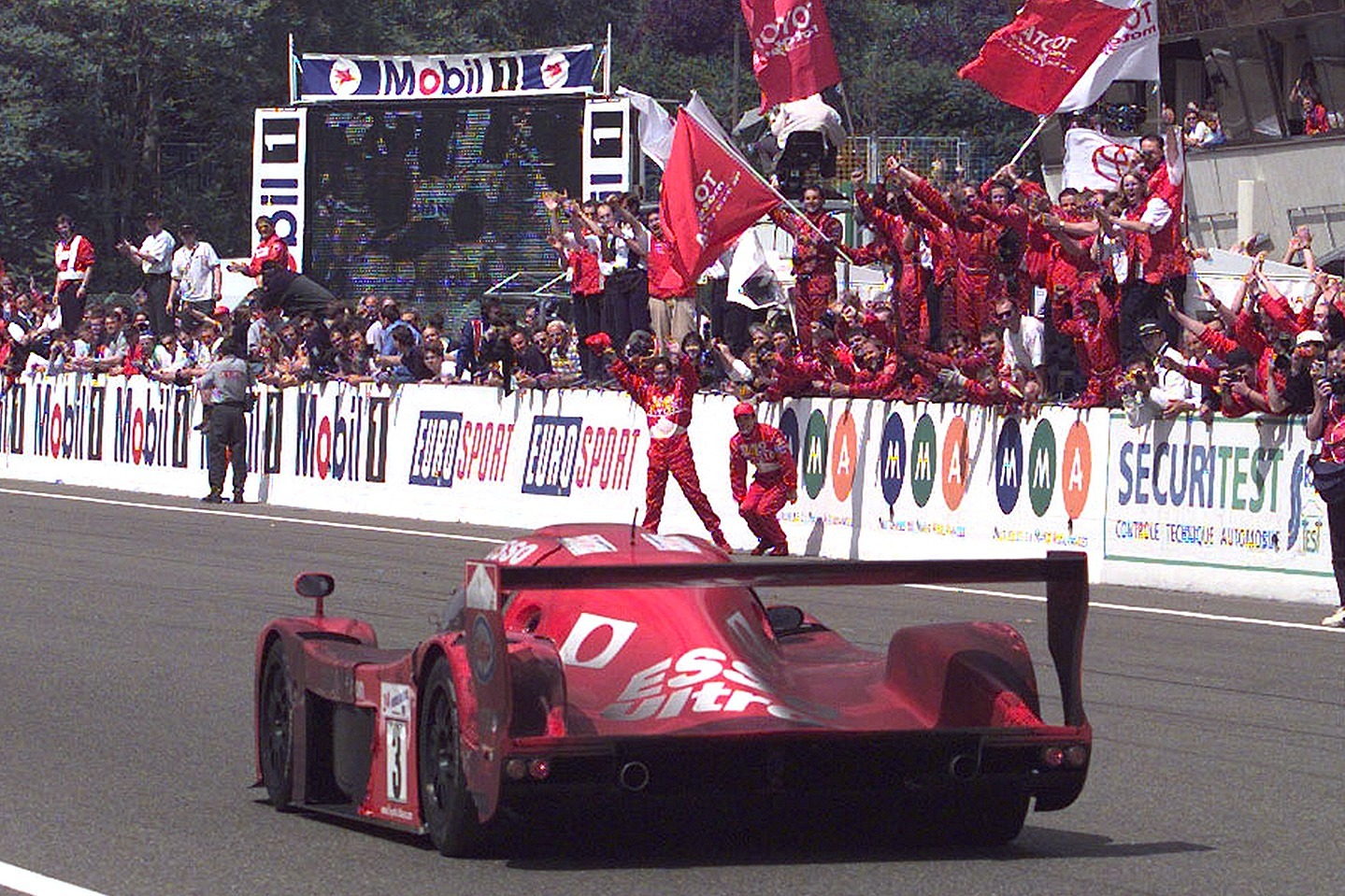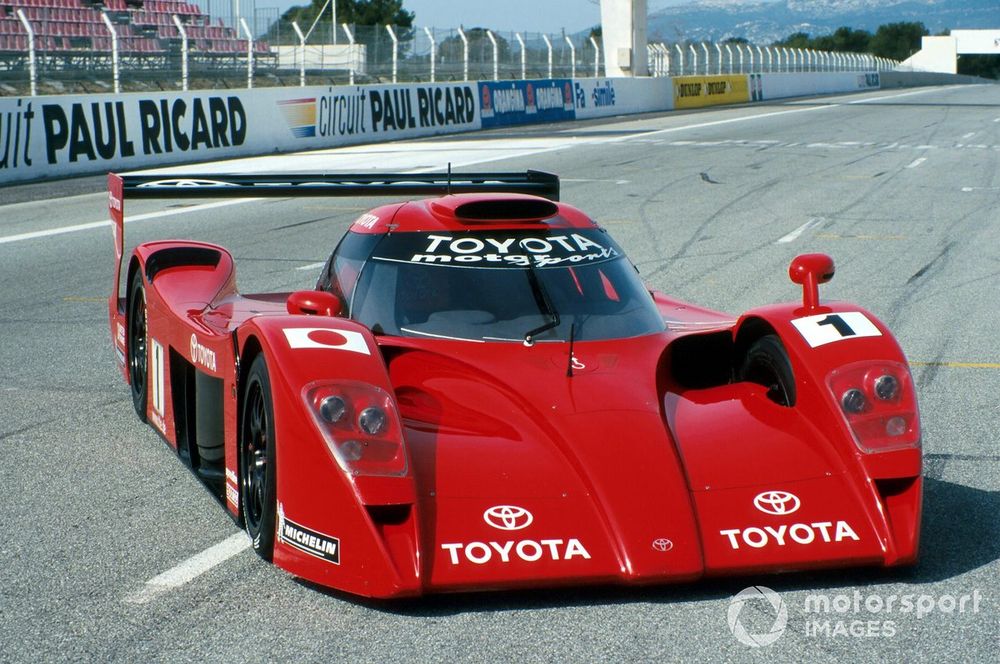Somehow the Toyota GT-One contrived never to win a race. Yet the car that moved the goalposts in the GT1 category from which it derived its name might well have triumphed in every one of the three events it contested.
All that was missing from its assaults on the Le Mans 24 Hours in 1998-99 was a bit of luck. Or rather, as its creator Andre de Cortanze prefers to say, the absence of bad luck.
Misfortune intervened every time a Toyota GT-One started a race. It struck at Le Mans both years and again in the Fuji 1000Km in November 1999, a one-off event in which the Japanese manufacturer was attempting to salvage some honour on home ground.
Toyota might have won on its first full-factory bid for outright honours at Le Mans since 1993 with the all-new contender designed and built in Germany by the same Toyota Motorsport GmbH squad that had masterminded its World Rally Championship success. It came within 80 minutes of victory, drivers Thierry Boutsen, Ralf Kelleners and Geoff Lees thwarted by gearbox failure.
The new Toyota was in the hunt from the off at Le Mans in 1998. It didn’t top the times at pre-qualifying in April, but only because Porsche’s Allan McNish “hung everything out” to go one hundredth quicker than Martin Brundle in the best of the GT-Ones entered under the TTE banner.
Come June, the 1990 Le Mans winner was fastest in qualifying on Wednesday, but Toyota opted against going for a time on Thursday and Brundle was knocked from pole by Mercedes.
Brundle made it into the lead as early as Mulsanne Corner on the first lap. The car the Briton shared with Emmanuel Collard and Eric Helary led until the fourth hour when Helary spun and then pitted with a wheel bearing problem.
The Boutsen car took over at the front, but it would have to make an extended stop in the ninth hour when the gearbox internals needed replacing. The same repair had been made earlier on the third Toyota shared by the all-Japanese line-up of Ukyo Katayama, Toshio Suzuki and Keiichi Tsuchiya, and the crew completed the change in just 16 minutes this time.
Gearbox woes hurt the Toyota challenge at the 1998 Le Mans 24 Hours
Photo by: Rainer W. Schlegelmilch / Motorsport Images
Toyota moved back into the lead when the two Porsche 911 GT1-98s hit problems shortly after 6am on Sunday, both losing around half an hour. The GT-One’s renewed advantage was then all but wiped out when a second change of the gearbox cluster was required.
Boutsen was 40s ahead of McNish, who shared his car with Laurent Aiello and Stephane Ortelli, when transmission problems struck again. There was no oil in the ’box and the damage was too extensive for another quick repair.
There are two stories relating to the absence of lubricant, though they are not entirely contradictory. Both concern minor – and avoidable – glitches that came with a major ramification.
De Cortanze, who had not only led the design of the GT-One but also ran the race programme, says the problem can be traced back to a quick trip through the gravel in the Saturday morning warm-up.
Toyota had come close to Le Mans victory at its first attempt with the GT-One, and 12 months later it was back with a heavily revised car with new aerodynamics and a hydraulic gearshift to overcome the gearbox issues
“I said I didn’t want to start the race without completely cleaning the car,” he recalls. “We removed the flat bottom to clean everything, but when it was put back it crushed two things: a sensor in the gearbox and a piece of piping we used to refill the transmission.”
De Cortanze knew there was some kind of issue when he spotted some oil smoke behind the #29 GT-One on Sunday morning. That was because the escaped oil was leaking straight onto the red-hot turbo, which explained both the smoke and the lack of other evidence.
“The oil temperatures were growing very slowly,” he explains. “At that time it was 105C and the gearbox was capable of going to 135C, but what I didn’t realise was that the oil level was going down and we could not refill the gearbox.”
The second story is that when the car came into the pits to retire in the penultimate hour a plug on the gearbox was absent, the assumption being it had not been replaced at the second cluster change. This explanation was recounted to your author shortly after Le Mans that year and Kelleners remembers it too.

Lessons learned from 1998, Toyota made tweaks to form a stronger attack a year later
Photo by: Rainer W. Schlegelmilch / Motorsport Images
John Litjens – today project leader at TMG on the LMP1 programme and back in 1998 a support engineer – can confirm at least part of the story. “The gearbox failed because there was hardly any oil left and there was a missing plug,” he says. “Whether this happened at the cluster change, I do not know.”
Toyota had come close to Le Mans victory at its first attempt with the GT-One, and 12 months later it was back with a heavily revised car with new aerodynamics and a hydraulic gearshift to overcome the gearbox issues. Toyota had a faster, more reliable car and was better prepared than the year before. That goes some way to explaining why the tales of bad luck in 1999 concern all three cars. Each might have won the race.
Brundle went six seconds faster and one place better in qualifying to achieve his only Le Mans pole. His early pace suggested he and team-mates Collard and Vincenzo Sospiri would be contenders.
Friday favourite: The ill-starred Toyota that was quick but struck out at Le Mans
Their chances took a dive in the fifth hour after a hydraulic failure forced a switch from steering-wheel paddles to the conventional gearstick. Nine laps were lost to repairs of both the hydraulics and gearbox.
Any chance of a comeback from this car disappeared in the night when a rear tyre blew out just before the first chicane on the Mulsanne Straight. It was suspected Brundle had run over some debris, though that’s never been confirmed. “All I know is that it blew at 333km/h,” he says. “The tread came off the tyre like a Polo mint.”
The car would only make it as far as Arnage after crabbing down the Mulsanne “on full lock to get the thing to go straight,” says Brundle. Nine hours in, and Toyota was down to two cars.
Much has been made of the four-lap lead enjoyed by the BMW V12 LMR that didn’t win Le Mans in 1999. JJ Lehto, Tom Kristensen and Jorg Muller looked set for victory until a bizarre failure on Sunday morning put the car into the wall, but the second Toyota was battling with this BMW early on Sunday.
McNish, who had slipped into Lees’s seat after Porsche decided against defending its Le Mans crown, reckons Toyota had the edge. “We would have won in a straight fight, but I’m sure Tom would say they would have done the same,” says McNish. “We’ve argued over that one plenty of times.
“Thierry had got into the lead and buggered off at one point, but we were slow in the pits. The team hadn’t competed since Le Mans the previous year, remember, but the guys got faster and faster through the race.”

Bad luck hit all three Toyotas in 1999, meaning the GT-One would not show its true potential over the 24 hours
Photo by: Motorsport Images
Toyota was down to just one car when Boutsen came into contact with a GT2-class Porsche as he approached the Dunlop Chicane during the night. What exactly happened isn’t clear, but he ended up first in the barriers and the hospital undergoing surgery for serious back injuries.
That left only the ‘Japanese’ Toyota with the same line-up as in 1998. They were, in truth, out of the game until Lehto’s accident in the 21st hour turned Le Mans into a straight race between them and the conservatively driven BMW of Yannick Dalmas, Pierluigi Martini and Joachim Winkelhock.
Katayama, Suzuki and Tsuchiya hadn’t been quick initially, but as the race wore on they picked up pace, and then some when they got the scent of victory. So much so that Katayama was able to set fastest lap in the final hours.
“We had a target lap time for the start of the race and one for the dark, and they didn’t manage either,” recalls Litjens, who engineered the Japanese trio. “They were a bit slow, but as soon as the sun came up on Sunday morning they got into a rhythm and went quicker and quicker.
Katayama continued to make inroads into the BMW’s advantage even after Martini – the quickest of its drivers – retook the controls
“When they realised they had a chance to win, it gave them an extra dimension.”
Katayama continued to make inroads into the BMW’s advantage even after Martini – the quickest of its drivers – retook the controls. The two cars were out of synch on pitstops, but all calculations suggested the German car would still be ahead after its final stop with 30 minutes or so remaining.
Martini’s advantage would have been around 15s. Would that have been enough? The man who engineered the winning BMW thinks not. “I had come to the realisation that they were going to catch us,” recalls Hans Reiter. “I was so nervous I couldn’t hold my pencil.”
The battle never came to a head. Katayama was forced onto the kerbs at the first Mulsanne chicane by gentleman driver Thomas Bscher in his year-old privateer BMW. The Toyota sustained a rear puncture and it was game over.

Trouble in traffic denied the all-Japanese Toyota squad a fight for victory in the closing stages in 1999
Photo by: Toyota
There was one more chance for the GT-One to add a victory to its CV. It looked like the one-off race at Fuji, organised by the Automobile Club de l’Ouest as a possible precursor to a series in Asia, would give the car its day in the sun, but de Cortanze describes it as “a race Toyota could not win”.
He blatantly accuses the ACO of favouritism towards Nissan, the only other manufacturer to take a car – a revised version of its R391 open-top prototype – to the November event. He points out that Toyota’s Japanese rival was at that juncture still planning to return to Le Mans the following year.
No one can recall the exact number of penalties, but it appears to be between two and five. “We received penalties for everything possible to make our car finish behind the Nissan,” says de Cortanze, who alleges one penalty was increased after he went to ask a pit official the reason for the stop/go. A minor electrical glitch and change of battery led to the loss of more time.
There was to be no consolation prize for a car that might have had a 100% win record at Le Mans. The GT-One was retired with no major victory to its name.
Top 10: Ranking the greatest cars never to win Le Mans

Toyota’s GT-One was fast but unreliability and misfortune denied it Le Mans glory
Photo by: Sutton Images
In this article
Be the first to know and subscribe for real-time news email updates on these topics
Subscribe to news alerts
Read the full article here

